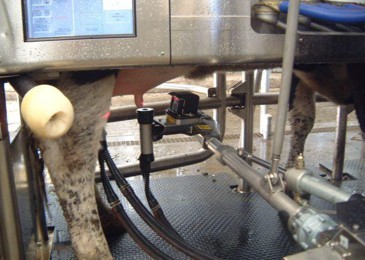Robot Utilisation

For more information, contact Dr Kendra Kerrisk, FutureDairy, ph (02) 9351-1631, email kendrad@usyd.edu.au or visit www.futuredairy.com.au
Photo:Click on the link to receive a high re image by automatic email: fd_amsrobot@futuredairy.com.au
Information for media
FutureDairy is a national research project for the Australian dairy industry, aimed at addressing the challenges likely to occur in the next 20 years. FutureDairy‟s major sponsors are Dairy Australia, DeLaval and the Department of Primary Industries (NSW) and the University of Sydney. Project leader: Dr Yani Garcia ph (02) 9351-1631; email: sgarcia@usyd.edu.au
Media contact: This media has been released by Monks Communication on behalf of the FutureDairy project.
Lee-Ann Monks ph 07 5450 0946 or 0419 349 244 email: mediareleases@monkscom.com.au
Note we have poor mobile reception – try the landline first.
